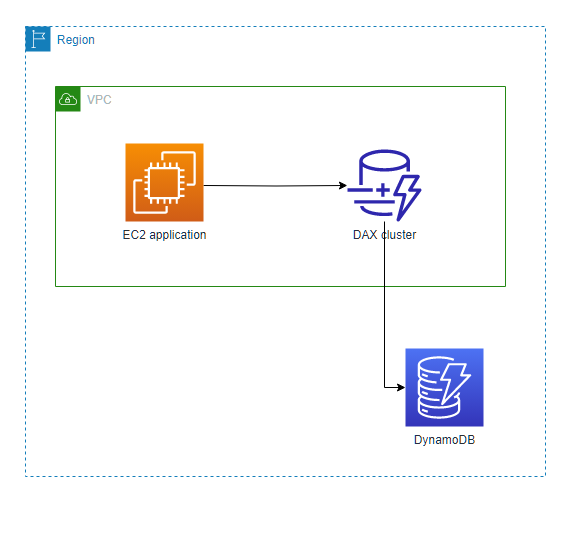DAX (DynamoDB Accelerator) is a fully managed, in-memory caching service for DynamoDB that can significantly improve read performance by reducing the number of requests to DynamoDB. DAX is designed to work with DynamoDB, and it provides a fast, scalable, and highly available caching layer that sits between your application and DynamoDB.
DAX can significantly improve read performance by reducing the number of requests to DynamoDB and caching frequently accessed data in memory. By using DAX, you can improve the performance and cost-effectiveness of your application while minimizing infrastructure management.
DAX supports write-through caching and ensures that the data in the cache is always up-to-date. DAX also supports auto-scaling, which means that it can automatically adjust the size of the cache based on the changing demands of your application.
DAX supports read consistency options, which allow you to choose the level of consistency required for your application. You can choose strong consistency, which ensures that the data returned by DAX is the most up-to-date, or eventual consistency, which returns the data that is most likely to be up-to-date.
How does that work
Here’s how DAX works:
- DAX is deployed as a cluster of in-memory nodes that sit between your application and DynamoDB.
- When a request for data is made, DAX checks its in-memory cache to see if the data is already there.
- If the data is in the cache, DAX returns it directly to the application, avoiding the need to make a request to DynamoDB.
- If the data is not in the cache, DAX retrieves it from DynamoDB and stores it in the cache for future requests.
- DAX supports write-through caching, which means that every write to DynamoDB also updates the cache in DAX. This ensures that the data in the cache is always up-to-date.
- DAX supports auto-scaling, which means that it can automatically adjust the size of the cache based on the changing demands of your application.
- DAX supports read consistency options, which allow you to choose the level of consistency required for your application. You can choose strong consistency, which ensures that the data returned by DAX is the most up-to-date, or eventual consistency, which returns the data that is most likely to be up-to-date.
Architecture Diagram
High level architecture diagram that shows how DAX clusters could work with DynamoDB and an EC2 application instance is below

Optimization Strategies
DynamoDB and DAX (DynamoDB Accelerator) can work together to optimize performance and cost-effectiveness. The following are some strategies for optimizing them for optimal performance:
- Use DAX for Read-Heavy Workloads: DAX is a fully managed, in-memory caching service for DynamoDB that can significantly improve read performance by reducing the number of requests to DynamoDB. You can use DAX to cache frequently accessed data, which reduces the read latency and improves the overall performance of your application.
- Choose the Right Partition Key: The partition key is used to distribute your data across multiple partitions in DynamoDB. Choosing an appropriate partition key can help distribute your data evenly across partitions, reducing hotspots and improving performance. When using DAX, it is important to choose a partition key that distributes your data evenly across DAX nodes.
- Use Secondary Indexes Wisely: Secondary indexes can help improve query performance by allowing you to query data using alternate keys. However, using too many indexes can increase the cost and complexity of your application. It’s important to use secondary indexes wisely and only when necessary.
- Properly Provision DynamoDB Capacity: Provisioning the right amount of read and write capacity is important for optimizing the performance and cost of DynamoDB. You can use tools like Amazon CloudWatch to monitor the performance of your application and adjust capacity based on demand.
- Optimize Query Patterns: Properly structuring your queries can help optimize the performance of DynamoDB and DAX. You should use the Query and Scan operations efficiently, and try to minimize the number of operations required to complete a query.
- Use Auto Scaling: DynamoDB and DAX support auto scaling, which allows you to automatically adjust read and write capacity based on the changing demands of your application. This can help you optimize performance and reduce costs by eliminating the need for manual adjustments.
- Test and Iterate: It’s important to continuously test and iterate your application to optimize performance and cost. You should monitor the performance of your application and make adjustments as necessary.
Overall, optimizing DynamoDB and DAX involves a combination of proper data modeling, partitioning, indexing, and provisioning of capacity. By using these optimizations, you can improve the performance and cost-effectiveness of your application while minimizing infrastructure management.
